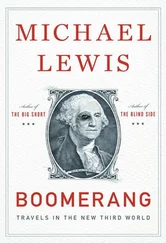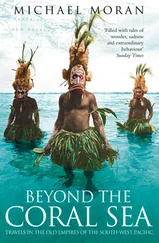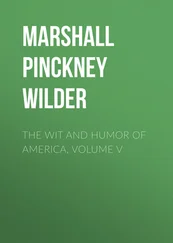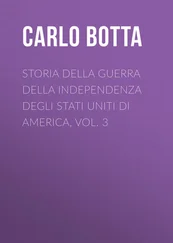The port of Cumana is only seven nautical leagues from Cumanacoa. It scarcely ever rains in the first-mentioned place, while in the latter there are seven months of wintry weather. At Cumanacoa, the dry season begins at the winter solstice, and lasts till the vernal equinox. Light showers are frequent in the months of April, May, and June. The dry weather then returns again, and lasts from the summer solstice to the end of August. Then come the real winter rains, which cease only in the month of November, and during which torrents of water pour down from the skies.
It was during the winter season that we took up our first abode in the Missions. Every night a thick fog covered the sky, and it was only at intervals that I succeeded in taking some observations of the stars. The thermometer kept from 18.5 to 20 degrees, which under this zone, and to the sensations of a traveller coming from the coasts, appears a great degree of coolness. I never perceived the temperature in the night at Cumana below 21 degrees. The greatest heat is felt from noon to 3 o'clock, the thermometer keeping between 26 and 27 degrees. The maximum of the heat, about two hours after the passage of the sun over the meridian, was very regularly marked by a storm which murmured near. Large black and low clouds dissolved in rain, which came down in torrents: these rains lasted two or three hours, and lowered the thermometer five or six degrees. About five o'clock the rain entirely ceased, the sun reappeared a little before it set, and the hygrometer moved towards the point of dryness; but at eight or nine we were again enveloped in a thick stratum of vapour. These different changes follow successively, we were assured, during whole months, and yet not a breath of wind is felt. Comparative experiments led us to believe that in general the nights at Cumanacoa are from two to three, and the days from four to five centesimal degrees cooler than at the port of Cumana. These differences are great; and if, instead of meteorological instruments, we consulted only our own feelings, we should suppose they were still more considerable.
The vegetation of the plain which surrounds the town is monotonous, but, owing to the extreme humidity of the air, remarkable for its freshness. It is chiefly characterized by an arborescent solanum, forty feet in height, the Urtica baccifera, and a new species of the genus Guettarda.* (* These trees are surrounded by Galega pilosa, Stellaria rotundifolia, Aegiphila elata of Swartz, Sauvagesia erecta, Martinia perennis, and a great number of Rivinas. We find among the gramineous plants, in the savannah of Cumanacoa, the Paspalus lenticularis, Panicum ascendens, Pennisetum uniflorum, Gynerium saccharoides, Eleusine indica, etc.) The ground is very fertile, and might be easily watered if trenches were cut from a great number of rivulets, the springs of which never dry up during the whole year. The most valuable production of the district is tobacco. Since the introduction of the farm* (* Estanco real de tabaco, royal monopoly of tobacco.) in 1779, the cultivation of tobacco in the province of Cumana is nearly confined to the valley of Cumanacoa; as in Mexico it is permitted only in the two districts of Orizaba and Cordova. The farm system is a monopoly odious to the people. All the tobacco that is gathered must be sold to government; and to prevent, or rather to diminish fraud, it has been found most easy to concentrate the cultivation in one point. Guards scour the country, to destroy any plantations without the boundaries of the privileged districts; and to inform against those inhabitants who smoke cigars prepared by their own hands.
Next to the tobacco of the island of Cuba and of the Rio Negro, that of Cumana is the most aromatic. It excels all the tobacco of New Spain and of the province of Varinas. We shall give some particulars of its culture, which essentially differs from the method practised in Virginia. The prodigious expansion which is remarked in the solaneous plants of the valley of Cumanacoa, especially in the abundant species of the Solanum arborescens, of aquartia, and of cestrum, seems to indicate the favourable nature of this spot for plantations of tobacco. The seed is sown in the open ground, at the beginning of September; though sometimes not till the month of December, which period is however less favourable for the harvest. The cotyledons appear on the eighth day, and the young plants are covered with large leaves of heliconia and plantain, and shelter them from the direct action of the sun. Great care also is taken to destroy weeds, which, between the tropics, spring up with astonishing rapidity. The tobacco is transplanted into a rich and well-prepared soil, a month or two after it has risen from the seed. The plants are disposed in regular rows, three or four feet distant from each other. Care is taken to weed them often, and the principal stalk is several times topped, till greenish blue spots indicate to the cultivator the maturity of the leaves. They begin to gather them in the fourth month, and this first gathering generally terminates in the space of a few days. It would be better if the leaves were plucked only as they dry. In good years the cultivators cut the plant when it is only four feet high; and the shoot which springs from the root, throws out new leaves with such rapidity that they may be gathered on the thirteenth or fourteenth day. These last have the cellular tissue very much extended, and they contain more water, more albumen and less of that acrid, volatile principle, which is but little soluble in water, and in which the stimulant property of tobacco seems to reside.
At Cumanacoa the tobacco, after being gathered, undergoes a preparation which the Spaniards call cura seca. The leaves are suspended by threads of cocuiza;* (* Agave Americana.) their ribs are taken out, and they are twisted into cords. The prepared tobacco should be carried to the king's warehouses in the month of June; but the indolence of the inhabitants, and the preference they give to the cultivation of maize and cassava, usually prevent them from finishing the preparation before the month of August. It is easy to conceive that the leaves, so long exposed to very moist air, must lose some of their flavour. The administrator of the farm keeps the tobacco deposited in the king's warehouses sixty days without touching it. When this time is expired, the manoques are opened to examine the quality. If the administrator find the tobacco well prepared, he pays the cultivator three piastres for the aroba of twenty-five pounds weight. The same quantity is resold for the king's profit at twelve piastres and a half. The tobacco that is rotten (podrido), that is, again gone into a state of fermentation, is publicly burnt; and the cultivator, who has received money in advance from the royal farm, loses irrevocably the fruits of his long labour. We saw heaps, amounting to five hundred arobas, burnt in the great square, which in Europe might have served for making snuff.
The soil of Cumanacoa is so favourable to this branch of culture, that tobacco grows wild, wherever the seed finds any moisture. It grows thus spontaneously at Cerro del Cuchivano, and around the cavern of Caripe. The only kind of tobacco cultivated at Cumanacoa, as well as in the neighbouring districts of Aricagua and San Lorenzo, is that with large sessile leaves,* (* Nicotiana tabacum.) called Virginia tobacco. The tobacco with petiolate leaves,* (* Nicotiana rustica.) which is the yetl of the ancient Mexicans, is unknown.
In studying the history of our cultivated plants, we are surprised to find that, before the conquest, the use of tobacco was spread through the greater part of America, while the potato was unknown both in Mexico and the West India Islands, where it grows well in the mountainous regions. Tobacco has also been cultivated in Portugal since the year 1559, though the potato did not become an object of European agriculture till the end of the seventeenth and beginning of the eighteenth century. This latter plant, which has had so powerful an influence on the well-being of society, has spread in both continents more slowly than tobacco, which can be considered only as an article of luxury.
Читать дальше












